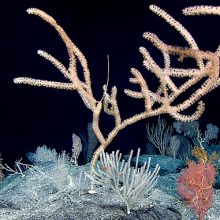Source: University of Hawaii
The deep-sea, ocean depths below 650 feet (200 meters), constitutes more than 90 percent of the biosphere, harbors the most remote and extreme ecosystems on the planet, and supports biodiversity and ecosystem services of global importance. A new publication on the impacts of deep-seabed mining by 13 prominent deep-sea biologists, led by University of Hawaiʻi at Mānoa Department of Oceanography Professor Craig Smith, seeks to dispel scientific misconceptions that have led to miscalculations of the likely effects of commercial operations to extract minerals from the seabed.
Interest in deep-seabed mining for copper, cobalt, zinc, manganese and other valuable metals has grown substantially in the last decade and mining activities are anticipated to begin soon.
“As a team of deep-sea ecologists, we became alarmed by the misconceptions present in the scientific literature that discuss the potential impacts of seabed mining,” said Smith. “We found underestimates of mining footprints and a poor understanding of the sensitivity and biodiversity of deep-sea ecosystems, and their potential to recover from mining impacts. All the authors felt it was imperative to dispel misconceptions and highlight what is known and unknown about deep-seabed mining impacts.”
Continue reading here.

